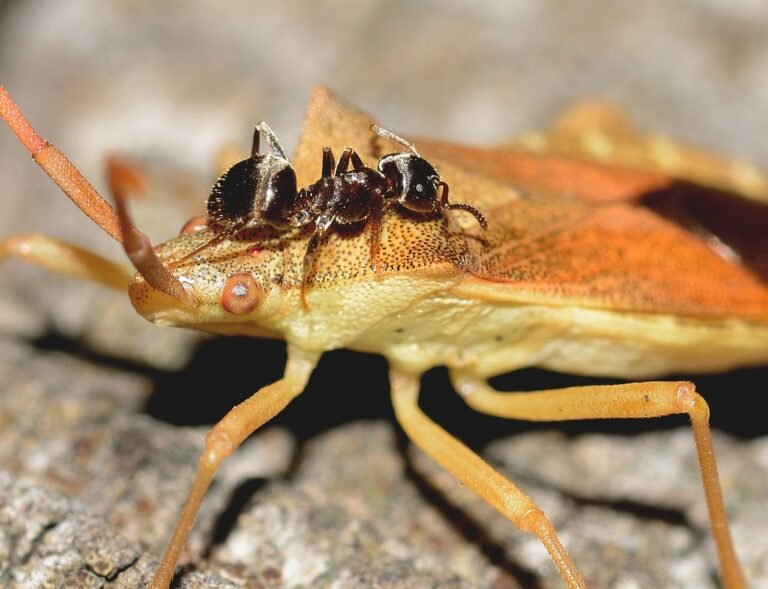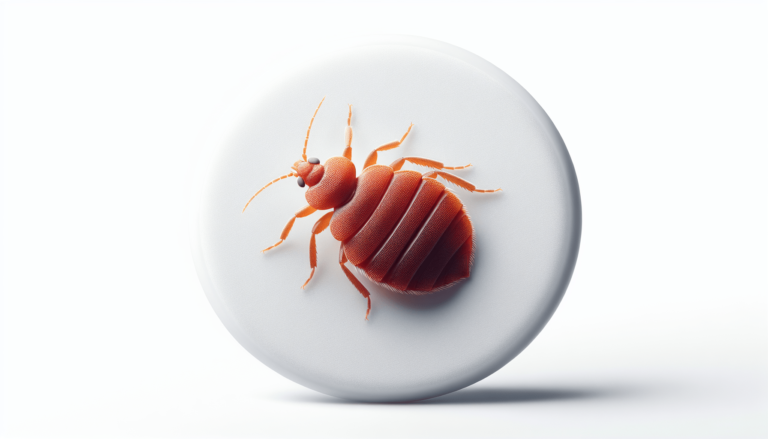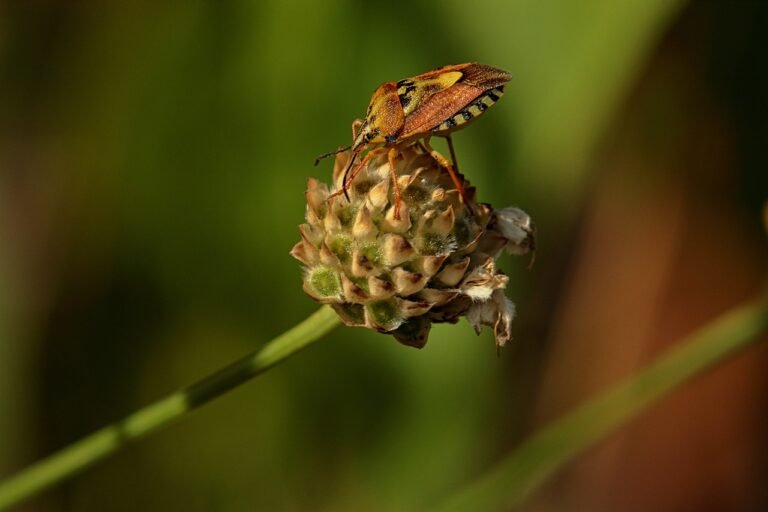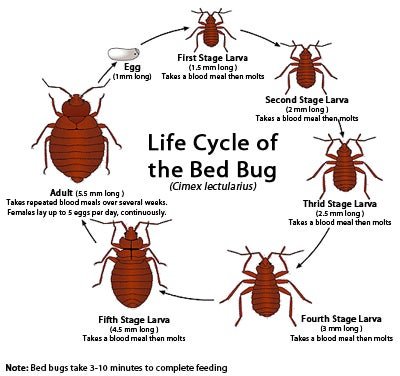5 Signs That You Have Bed Bugs
Are you experiencing unexplained bites on your body, especially during the night? Have you noticed small reddish-brown stains on your sheets or a peculiar musty smell in your bedroom? These could be signs that you have a bed bug infestation. In this article, we will explore five key indicators that will help you determine if you have bed bugs in your home. By providing detailed lists, statistics, facts, and personal insights, this comprehensive guide aims to be your go-to resource for information on bed bugs. So, if you suspect these pesky creatures have invaded your sanctuary, keep reading to uncover the signs and solutions to this common problem.
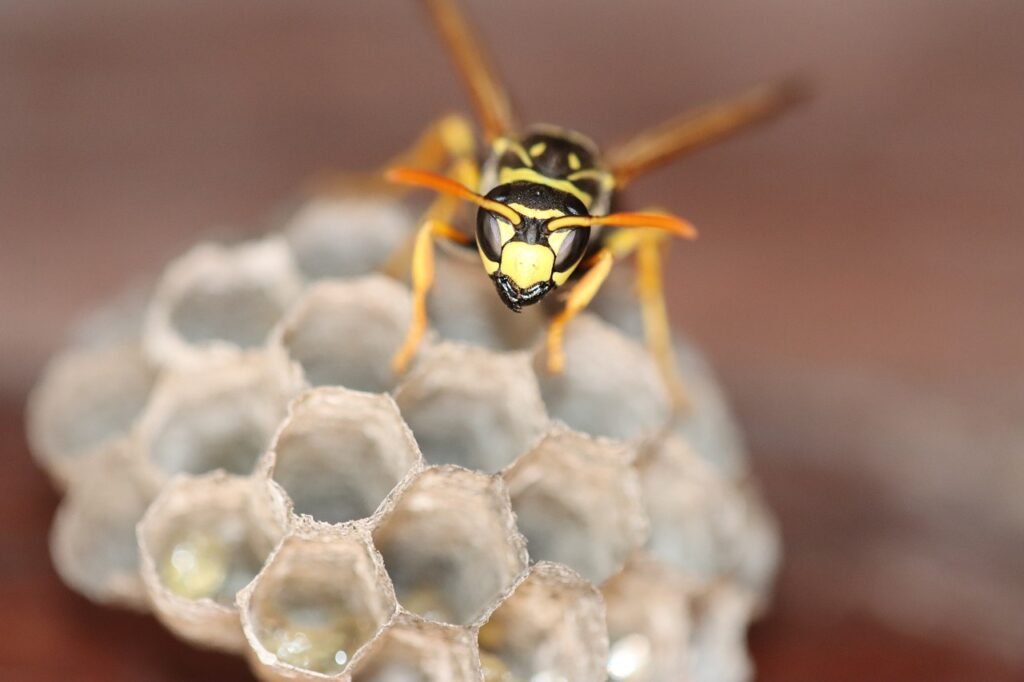
This image is property of pixabay.com.
Understanding bed bug appearances
Bed bugs are small, parasitic insects that can infest your home and cause a lot of frustration and discomfort. To effectively deal with a bed bug problem, it’s important to first understand their appearances and physical attributes. This will help you identify them and take appropriate action.
Bed bug size and color
Bed bugs are generally small in size, measuring about 4 to 5 millimeters in length. However, they can grow larger depending on their life stage and feeding habits. When fully grown, they can reach up to 5 to 7 millimeters in length.
In terms of color, bed bugs can vary. They are usually a reddish-brown color, but can appear more reddish or darker brown after feeding. Their bodies are flat and oval-shaped, allowing them to easily hide in crevices and cracks.
Recognizing bed bug stages
Bed bugs go through several stages of development as they mature. Understanding these stages can help you identify them more accurately. The three main bed bug stages are:
-
Eggs: Bed bug eggs are small and white, measuring about 1 millimeter in length. They are usually found in clusters and can be difficult to spot with the naked eye.
-
Nymphs: After hatching from the eggs, bed bugs go through five nymph stages before reaching adulthood. Nymphs are smaller versions of adult bed bugs and gradually become larger with each molt. They are translucent or light in color and may appear nearly invisible until they feed.
-
Adults: Adult bed bugs are the easiest to recognize due to their larger size and distinct body shape. They have a flat, oval-shaped body and are usually reddish-brown in color. After feeding, their body becomes larger and darker.
Physical attributes of bed bugs
In addition to their size and color, bed bugs have several physical attributes that can help you identify them. These include:
-
Antennae: Bed bugs have two antennae protruding from their heads. These antennae are segmented and usually shorter than the length of their bodies. They use their antennae to sense their surroundings and locate potential hosts.
-
Legs: Bed bugs have six legs located near the front of their bodies. These legs are adapted for crawling and gripping different surfaces. Each leg has tiny claws that enable bed bugs to cling to fabrics and surfaces.
-
Wingless: Unlike other types of insects, adult bed bugs do not have wings. This makes them unable to fly or jump. However, they are excellent crawlers and can move quickly over various surfaces.
By familiarizing yourself with the size, color, stages, and physical attributes of bed bugs, you will be better equipped to identify them in your home and take appropriate measures to address the issue.
Identifying bed bug bites
One of the most common signs of a bed bug infestation is the presence of bed bug bites on your body. When bed bugs feed, they bite the skin to access your blood. These bites can cause itchiness, redness, and discomfort. Understanding how to distinguish bed bug bites from other insect bites is crucial for effective identification.
Distinguishing between mosquito and bed bug bites
Mosquito bites and bed bug bites can sometimes be similar in appearance, but there are a few key differences to look out for. Mosquito bites typically appear as small, raised bumps that may become red and itchy. They often occur in exposed areas of the body, such as the arms and legs, and can be accompanied by a mild stinging sensation.
On the other hand, bed bug bites tend to be clustered together in groups or rows, often in covered areas of the body, such as the back, neck, or abdomen. They appear as small, red welts or bumps that may be itchy and slightly swollen. Bed bug bites can also cause a burning or crawling sensation on the skin.
Skin reactions and itchiness
Bed bug bites can vary in severity depending on your individual skin sensitivity and the number of bites. While some people may experience mild reactions, such as minimal itching and redness, others may have more intense reactions, including severe itchiness, swelling, and even blistering. In rare cases, excessive scratching can lead to secondary skin infections.
It’s important to note that not everyone reacts to bed bug bites in the same way. Some individuals may not have any visible reactions at all, making it even more crucial to rely on other signs of a bed bug infestation.
Areas where bed bugs typically bite
Bed bugs are attracted to warmth and carbon dioxide, which are released by humans during sleep. As a result, they tend to bite exposed areas of the body that are easily accessible while you’re sleeping. Common areas targeted by bed bugs include the face, neck, arms, hands, and legs.
While bed bug bites are most commonly found on these body parts, it’s also possible for bites to occur in less exposed areas, such as on the back or stomach. If you consistently wake up with unexplained bites or notice clusters of bites in a specific pattern, it’s a strong indication of a potential bed bug infestation.
By being able to distinguish bed bug bites from other insect bites and recognizing the areas where bed bugs typically bite, you can quickly identify the presence of bed bugs in your home and take the appropriate actions to address the issue.
Physical signs of bed bugs
In addition to bed bug bites, there are several physical signs that can indicate the presence of a bed bug infestation. By knowing how to identify these signs, you can take proactive steps to address the problem effectively.
Bed bug fecal spots on bedding
One of the most telltale signs of a bed bug infestation is the presence of dark fecal spots on your bedding. Bed bugs excrete dark-colored feces after they have fed on blood. These fecal spots are small, about the size of a pinhead, and may appear streaky or smudged. They can often be found on the seams, corners, or folds of your mattress, sheets, and pillowcases.
To identify bed bug fecal spots, inspect your bedding thoroughly, paying close attention to any dark or rust-colored stains. If you notice these spots, it is a strong indication of an active bed bug infestation.
Shed skins of bugs
Bed bugs go through a molting process as they mature from one life stage to another. During this process, they shed their exoskeleton, leaving behind shed skins or casings. These shed skins are translucent and look similar to the actual bed bugs, but they lack color.
To identify bed bug shed skins, carefully inspect your bedding, mattress seams, and other areas where bed bugs may hide. Look for empty exoskeletons that may resemble bed bugs but are lighter in color.
Presence of bed bug eggs
Another clear sign of a bed bug infestation is finding their eggs. Bed bug eggs are tiny, about 1 millimeter in length, and are usually white in color. They are typically found in clusters, hidden in crevices, cracks, or in the seams of your mattress, bedding, or furniture.
To identify bed bug eggs, carefully inspect the areas near your sleeping environment, focusing on seams, corners, and tight spaces. Look for small, white objects that are similar in shape and size to grains of rice.
By being able to identify bed bug fecal spots, shed skins, and eggs, you can confirm the presence of these pests in your home and take appropriate measures to address the infestation.
Detecting musty odor
Apart from physical signs, another indicator of a bed bug infestation is a distinctive musty odor. Bed bugs release pheromones, or scent glands, that produce a distinct smell. Being able to recognize this odor can help you detect the presence of bed bugs even if there are no other visible signs.
Recognizing the smell of bed bug’s scent glands
The musty odor emitted by bed bugs is often described as being sickly sweet or similar to the smell of coriander. It is a distinctive scent that can be quite strong when there is a large infestation. It’s important to note that not everyone can detect this odor, as sensitivity to smells varies from person to person.
Areas to look for the smell
If you suspect a bed bug infestation, pay attention to specific areas where the musty odor of bed bugs may be more noticeable. These areas include:
-
Mattress: Start by inspecting your mattress, focusing on the seams, crevices, and any folds where bed bugs may hide. Using your nose, carefully sniff these areas for any unusual odors.
-
Upholstered furniture: Bed bugs are known to infest upholstered furniture such as couches and chairs. Check the cushions, seams, and any cracks or crevices for signs of bed bugs or the associated odor.
-
Baseboards and walls: Bed bugs can also hide in cracks and crevices of baseboards and walls. Inspect these areas and sniff for any unusual smells.
-
Closets and dressers: Bed bugs can easily infest clothing, so it’s important to check your closets and dressers. Pay attention to any foul smells or signs of bed bugs near clothing or within storage spaces.
By being able to recognize the musty odor associated with bed bugs and knowing the specific areas to look for this smell, you can increase your chances of detecting an infestation even if there are no visible signs.
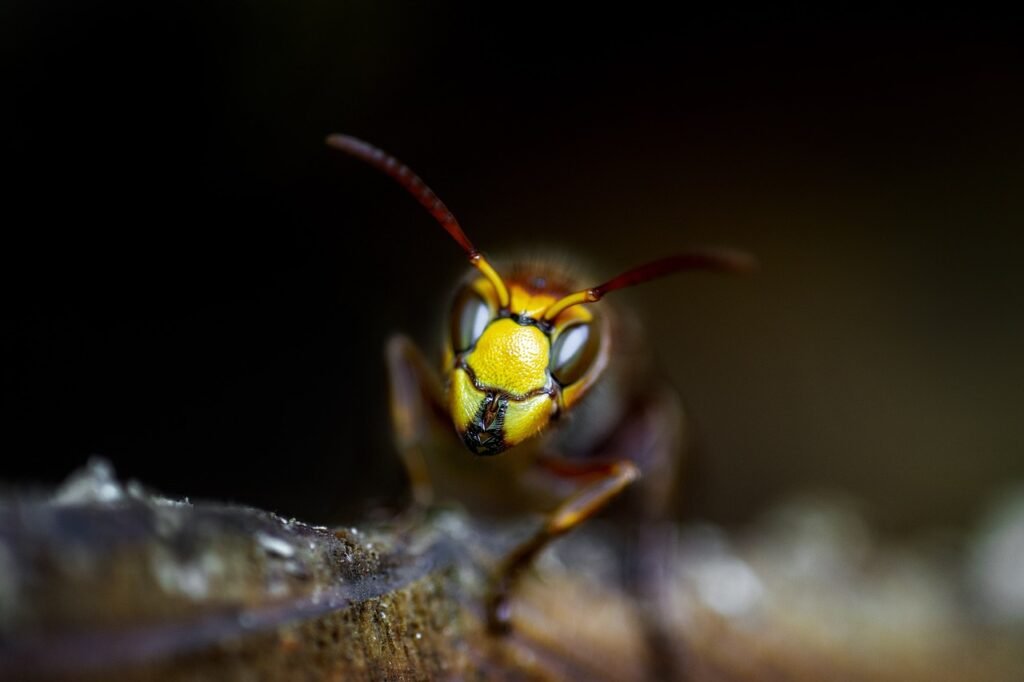
This image is property of pixabay.com.
Noticing unexplained stains
In addition to bites and odors, bed bugs can leave behind stains that can serve as a clear indication of their presence. Being able to identify these stains can help confirm a bed bug infestation and guide you in taking appropriate measures to address the problem.
Characteristics of bed bug blood stains
When bed bugs feed on human blood, they can accidentally crush or burst during the process. This can lead to the presence of blood stains on your bedding or other surfaces. Bed bug blood stains generally have the following characteristics:
-
Rusty or reddish-brown color: Bed bug blood stains are typically a rusty or reddish-brown color. This is due to the oxidation of the hemoglobin in the blood when exposed to air.
-
Smears or small spots: Bed bug blood stains may appear as smears or small spots on your mattress, sheets, pillowcases, or other areas where bed bugs have been active. These stains are usually small and can be difficult to spot, especially on dark-colored bedding.
Effective methods to spot bed bug stains
To identify bed bug blood stains, thoroughly inspect your bedding and any other areas where bed bugs may be present. Use a flashlight and focus on mattress seams, corners, pillowcases, and upholstered furniture. Look for any discolorations that match the characteristics of bed bug blood stains.
It’s important to note that blood stains alone may not be enough to confirm a bed bug infestation, as they can also be caused by other factors such as accidental cuts or menstrual bleeding. However, when combined with other signs such as bites, fecal spots, or shed skins, blood stains can provide strong evidence of a bed bug problem.
By understanding the characteristics of bed bug blood stains and employing effective inspection methods, you can identify these stains and take necessary steps to address a potential infestation.
Performing a bed bug inspection
If you suspect that you have a bed bug infestation, it’s important to conduct a thorough inspection to confirm their presence and determine the extent of the problem. By following a systematic approach, you can effectively identify areas where bed bugs may be hiding and take appropriate action.
Best time to search for bed bugs
Bed bugs are nocturnal insects, which means they are most active during the night when you are asleep. Therefore, the best time to search for bed bugs is during the early morning hours or shortly before dawn. At this time, bed bugs are more likely to be visible and active.
Checking bed frames and box springs
Start your bed bug inspection by examining the bed frame and box springs. Remove any bedding, including sheets, blankets, and pillowcases, and use a flashlight to carefully inspect the frame and corners of the bed. Look for any signs of bed bugs, such as live bugs, shed skins, or dark fecal spots.
Pay close attention to the seams, cracks, and crevices of the bed frame and box springs, as these are common hiding spots for bed bugs. Use a credit card or similar tool to scrape along the seams and dislodge any hidden bed bugs or eggs.
Inspecting bedding and surrounding areas
Next, examine your bedding and the surrounding areas for any signs of bed bugs. Inspect the mattress seams, folds, and tufts, as well as any tags or labels attached to the mattress. Look for live bugs, shed skins, blood stains, or dark fecal spots.
In addition to the mattress, check other areas where bed bugs may hide, such as bed sheets, pillowcases, and blankets. Carefully inspect the seams, folds, and corners of these items.
Don’t forget to inspect other furniture near your bed, such as nightstands, dressers, and upholstered chairs. These can also be potential hiding spots for bed bugs. Use a flashlight and thoroughly examine the seams, crevices, and cracks of these furniture pieces.
By performing a systematic inspection of your bed frame, box springs, bedding, and surrounding areas, you can effectively identify the presence of bed bugs and take the necessary steps to address the infestation.
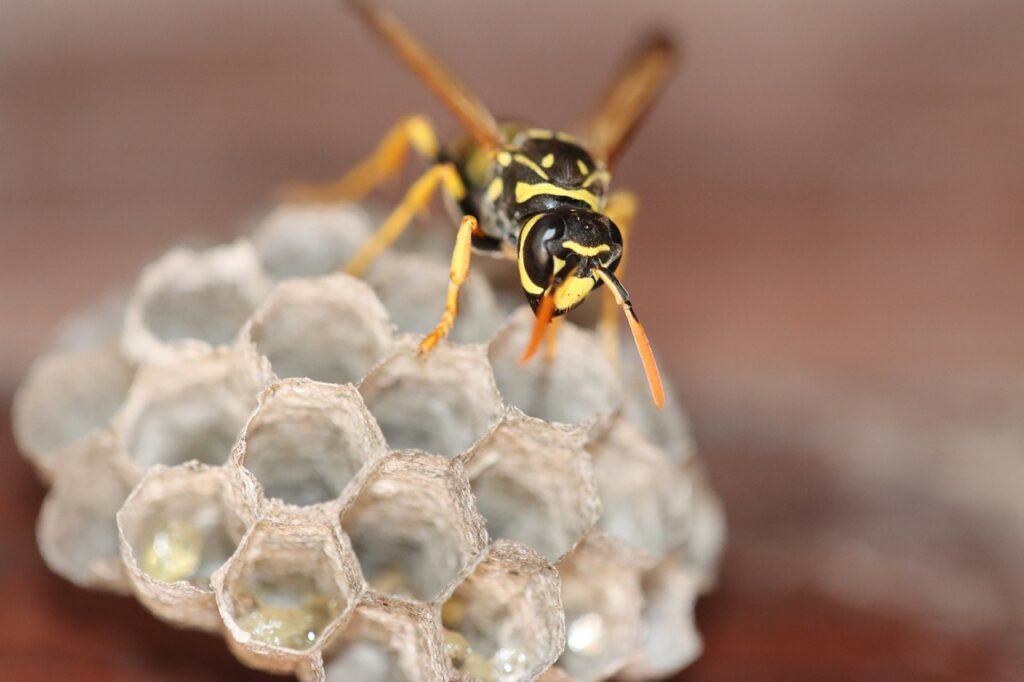
This image is property of pixabay.com.
Dealing with a potential infestation
Discovering a bed bug infestation can be stressful and overwhelming. However, it’s important to take immediate action to prevent further spread and eliminate the problem. While there are some do-it-yourself methods for addressing bed bugs, it’s highly recommended to seek professional help to ensure effective treatment.
Tips to prevent further spread
To prevent further spread of bed bugs and minimize the risk of reinfestation, consider taking the following steps:
-
Quarantine infested items: If you have identified specific items infested with bed bugs, such as bedding or clothing, place them in sealed plastic bags or containers to prevent the bugs from spreading to other areas of your home.
-
Vacuum and clean: Use a high-powered vacuum cleaner with a HEPA filter to thoroughly clean your mattress, furniture, carpets, and other areas where bed bugs may be present. Be sure to empty the vacuum into a sealed bag and dispose of it properly.
-
Launder infested items: Wash any infested clothing, bedding, or fabric items in hot water at a temperature of 120°F (49°C) or higher. Dry them on high heat for at least 30 minutes to kill any remaining bed bugs or eggs.
-
Reduce clutter: Clear out any unnecessary clutter, as this can provide hiding spaces for bed bugs. Keep your living space clean and organized to make it easier to detect and address any future infestations.
Importance of contacting professionals
While DIY methods may provide temporary relief, a professional pest control company is often the most effective solution for eliminating a bed bug infestation. Professional exterminators have the knowledge, experience, and tools necessary to identify and eradicate bed bugs from your home.
When choosing a professional pest control company, ensure that they have experience in dealing specifically with bed bug infestations. Ask for references, get multiple quotes, and inquire about their treatment methods, including the use of environmentally friendly alternatives if that is important to you.
Homemade remedies and their effectiveness
There are various homemade remedies and natural alternatives that claim to eliminate bed bugs. While some may provide temporary relief, it’s important to note that they are often not as effective as professional treatments. Common homemade remedies include:
-
Essential oils: Certain essential oils, such as lavender, tea tree, and peppermint oil, are believed to repel bed bugs. However, their effectiveness in eliminating an infestation is limited, and they may only provide short-term relief.
-
Diatomaceous earth: This natural powder is made from fossilized algae and is often used as a bed bug control method. It works by dehydrating and damaging the exoskeleton of the bugs. While diatomaceous earth can be effective when applied correctly, it can take a substantial amount of time and repeated applications to fully eliminate an infestation.
-
Heat treatment: Using high heat to kill bed bugs is another popular DIY method. This involves exposing infested items or entire rooms to temperatures of 120°F (49°C) or higher. While heat treatment can be effective, it requires specialized equipment and careful monitoring to ensure all bugs and eggs are eliminated.
It’s important to approach homemade remedies with caution and keep in mind that they may not provide a comprehensive and long-lasting solution to a bed bug infestation. Consulting with a professional pest control company is often the best course of action to ensure effective treatment.
Preventive measures to avoid bed bugs
Preventing a bed bug infestation in the first place is always preferable to dealing with an existing problem. By taking proactive measures and following good hygiene practices, you can reduce the risk of bed bugs entering your home.
Following hygiene protocols
Maintaining good personal hygiene and cleanliness in your home can help deter bed bugs. Follow these hygiene protocols to minimize the chances of an infestation:
-
Regularly clean and vacuum your home, paying close attention to areas where bed bugs may hide, such as cracks, crevices, and furniture seams.
-
Launder your bedding, clothing, and fabric items on a regular basis, especially if you have stayed in a hotel or another potentially infested environment.
-
Avoid bringing used furniture, mattresses, or second-hand items into your home without thoroughly inspecting them for signs of bed bugs.
-
Be cautious when staying in hotels or other accommodations. Inspect the room thoroughly upon arrival, paying close attention to the mattress, headboard, and furniture. Keep your luggage off the floor and away from the bed.
Sealing cracks and crevices
Bed bugs can enter your home through small cracks and crevices. By sealing these entry points, you can minimize their chances of infesting your living space. Take the following steps to seal potential entry points:
-
Inspect your home for any cracks or crevices in walls, baseboards, and furniture. Use caulk or sealant to fill these gaps.
-
Install door sweeps on exterior doors to prevent bed bugs from crawling through gaps at the bottom of the door.
-
Encase your mattress and box spring in bed bug-proof covers. These covers are designed to keep bed bugs trapped inside, preventing infestations from spreading.
Regular inspection of furniture and clothing
Regularly inspecting your furniture and clothing is essential for early detection and prevention of bed bug infestations. Follow these practices to stay vigilant:
-
Inspect your furniture periodically, paying attention to seams, cracks, and crevices where bed bugs may hide. Vacuum or clean upholstered furniture regularly.
-
Check your luggage, bags, and clothing after returning from trips or staying in potentially infested environments. Wash and dry clothing on high heat to kill any potential bed bugs or eggs.
-
If you suspect a bed bug infestation in your home, consider using bed bug monitors or traps. These can help detect and monitor the presence of bed bugs, giving you early warning of an infestation.
Understanding common living spaces of bed bugs
To effectively prevent and address bed bug infestations, it’s important to understand the common living spaces where bed bugs are often found. By being aware of these spaces, you can take proactive measures to minimize the risk of an infestation.
Bed bugs and furniture
Bed bugs are notorious for their ability to hide in furniture, particularly in mattresses, box springs, and upholstered items. They can squeeze into tiny cracks and crevices, making furniture an ideal harborage for them. Regularly inspect your furniture for signs of bed bugs and consider using bed bug-proof covers or encasements to protect your mattress and box spring.
Bed bugs in clothing
Bed bugs can also hitch a ride on clothing and travel from one location to another. If you suspect bed bugs, launder your clothing on high heat or put them in a dryer on high heat for at least 30 minutes to kill any potential bugs or eggs. It’s also important to be cautious when trying on clothes in stores or purchasing used clothing items.
How bed bugs travel between rooms and houses
Bed bugs are adept at crawling from one area to another, including between rooms and houses. They can travel through cracks and crevices, electrical outlets, and even through pipes. They can also be transported on clothing, luggage, or furniture. Being aware of these potential modes of transportation can help you take preventive measures to stop them from spreading.
By following good hygiene protocols, sealing cracks and crevices, inspecting furniture and clothing regularly, and understanding the common living spaces of bed bugs, you can significantly reduce the risk of an infestation in your home.
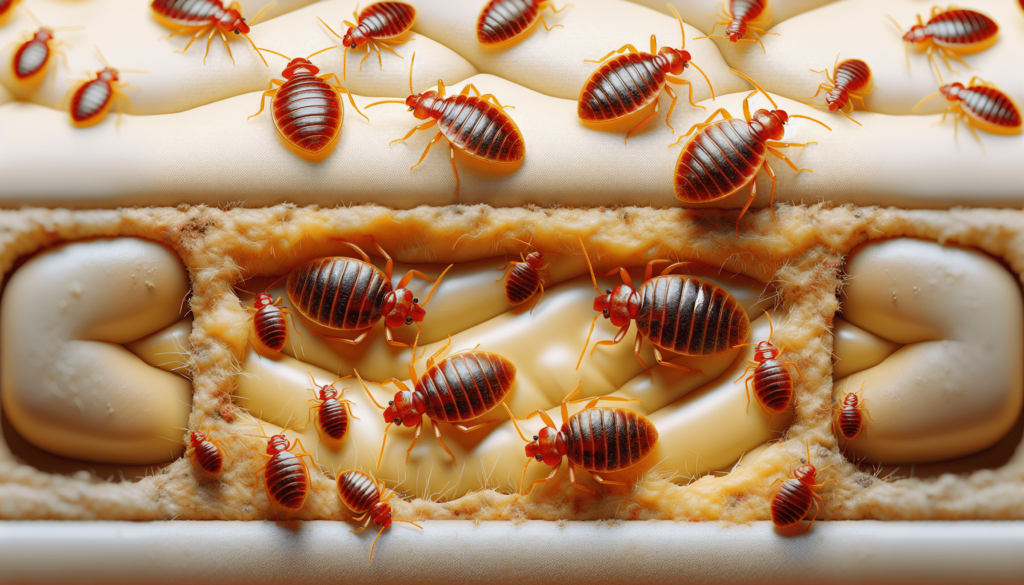
Insights into bed bug habits
Understanding the habits and behavior of bed bugs is essential for effective control and prevention of infestations. By gaining insights into how bed bugs interact with and feed on their hosts, you can take appropriate measures to protect yourself and your home.
Bed bugs and human blood
Bed bugs are hematophagous parasites, which means they feed exclusively on blood. Their primary source of nourishment is human blood, although they can also feed on the blood of other warm-blooded animals if necessary. Bed bugs typically feed at night when their hosts are asleep and unaware of their presence.
To protect yourself from bed bug bites, consider taking these precautions:
-
Regularly inspect your bedding and sleeping areas for signs of bed bugs. This includes checking for live bugs, shed skins, fecal spots, or blood stains.
-
Use bed bug-proof mattress encasements and pillow protectors to create a barrier between you and the bugs.
-
Keep your sleeping area clean and clutter-free to minimize hiding spots for bed bugs.
Bed bugs’ hiding behavior during daytime
Bed bugs are predominantly nocturnal creatures and prefer to hide in dark, secluded places during the daytime. This behavior allows them to remain undetected and avoid potential threats. Common hiding spots for bed bugs include:
-
Mattresses and box springs: Bed bugs often hide in the seams, folds, or tufts of mattresses and box springs. They may also hide in cracks or crevices in the bed frame.
-
Furniture: Upholstered furniture, such as couches, chairs, and recliners, can provide ideal hiding spots for bed bugs. They can hide in the seams, cushions, or any cracks or crevices present.
-
Baseboards and walls: Bed bugs can crawl into small cracks and crevices in baseboards and walls, remaining hidden until they emerge to feed.
By understanding the hiding behavior of bed bugs, you can focus your inspection efforts on these common hiding spots and increase the likelihood of detecting an infestation.
Patterns of bed bug’s activity during the night
Bed bugs have specific activity patterns during the night when they are most active. Understanding these patterns can help you devise a strategy to monitor and control infestations effectively.
-
Feeding behavior: Bed bugs are attracted to the warmth and carbon dioxide emitted by sleeping humans. They typically feed between midnight and 5 am, preferring hosts who are in a deep sleep.
-
Travel patterns: After feeding, bed bugs return to their hiding spots to digest and rest. They usually stay within a few feet of their hosts, as they are not strong flyers or jumpers. Bed bugs tend to travel in a linear or zigzag pattern, moving between cracks, crevices, and other harborage areas.
-
Reproduction and mating: Bed bugs are known for their ability to reproduce rapidly. Females can lay several eggs per day, with mature eggs hatching within 6 to 10 days. Mating typically occurs soon after a blood meal, and the process can be quite aggressive, with multiple males attempting to mate with a single female.
By understanding the feeding behavior, travel patterns, and reproduction habits of bed bugs, you can adopt strategies to effectively monitor and control infestations, such as setting traps or using specialized bed bug monitors.
In conclusion, understanding the appearances, behaviors, and signs of bed bugs is essential for effective identification, prevention, and control of infestations. By being familiar with their physical attributes, distinguishing their bites from other insects, recognizing their presence through physical signs, detecting their musty odor, noticing unexplained stains, performing regular inspections, and taking appropriate actions, you can mitigate the risks associated with bed bugs and maintain a bed bug-free environment in your home. Remember, if you suspect a bed bug infestation, it’s important to seek professional help to ensure successful eradication.

